Nature has a fascinating way of developing similar adaptations in unrelated species, a phenomenon known as convergent evolution. One of the most intriguing examples is the nuthatch—a bird that climbs trees with woodpecker-like agility despite having no close relationship to woodpeckers.
Unlike most birds that perch on branches, these remarkable avian acrobats treat tree trunks as their primary domain, moving with surprising dexterity up, down, and even upside-down along the bark. This specialized behavior has earned nuthatches the nickname “upside-down birds” and makes them one of woodland’s most distinctive inhabitants.
The Remarkable Nuthatch: An Introduction
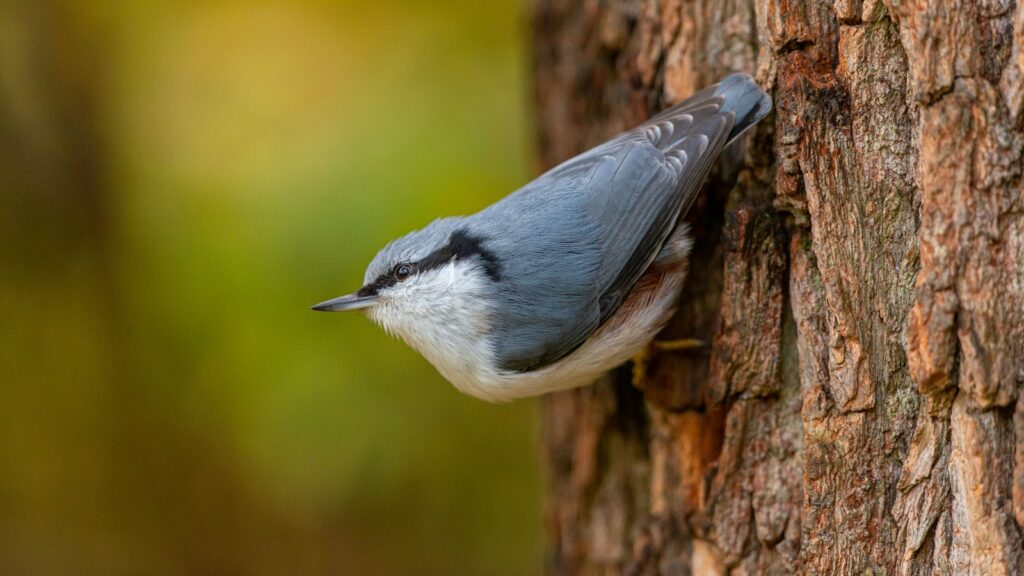
Nuthatches belong to the family Sittidae, comprising about 29 species worldwide with distinct populations across North America, Europe, Asia, and parts of North Africa. These small, compact birds typically feature strong bills, short tails, powerful legs, and specialized feet that enable their extraordinary climbing abilities.
Despite superficial similarities to woodpeckers in their feeding habits and tree-climbing behavior, nuthatches evolved these traits independently and belong to an entirely different taxonomic family. Their name derives from their habit of wedging seeds and nuts into bark crevices and then “hatching” them open with their sharp bills—a behavior that distinguishes them from true woodpeckers who primarily drill for insects.
Anatomical Adaptations for Vertical Climbing
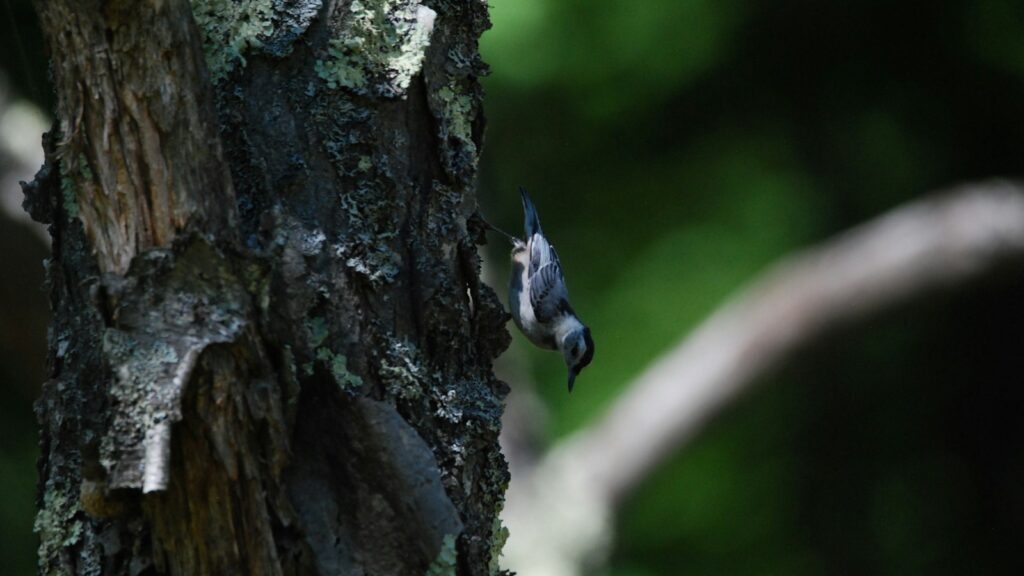
The nuthatch’s body is perfectly engineered for life on vertical surfaces, with several key adaptations that facilitate their extraordinary climbing abilities. Their most distinctive feature is their powerful legs and oversized feet equipped with long, curved claws that act like grappling hooks on tree bark. The hind toe (hallux) is particularly large and strong, creating a secure grip that allows them to defy gravity.
Unlike woodpeckers that rely on stiff tail feathers as a prop when climbing, nuthatches have short, soft tails that allow greater flexibility and maneuverability around the trunk. Their low center of gravity and compact body design further enhance stability during their acrobatic movements, creating a completely different approach to tree climbing than their woodpecker counterparts.
Masters of Upside-Down Movement
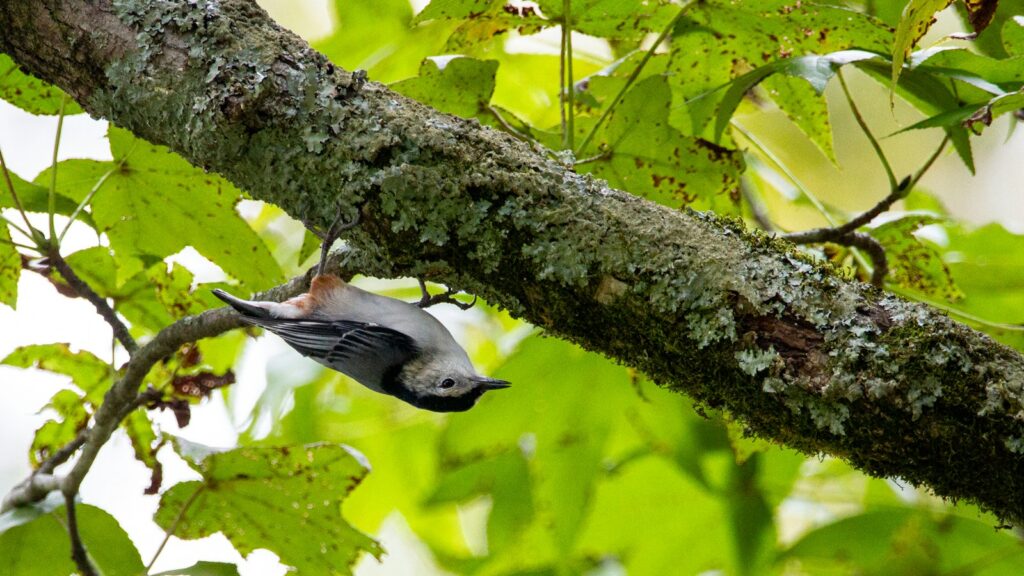
Perhaps the most astounding aspect of nuthatch behavior is their ability to descend trees headfirst, an extremely rare skill in the avian world. This downward climbing technique gives nuthatches a significant advantage, allowing them to spot insects and food items that birds approaching from below might miss.
Their specialized feet maintain a secure grip even when facing downward, with their back toe working effectively regardless of orientation. Scientists believe this unique adaptation evolved to reduce competition with other bark-feeding birds like woodpeckers and treecreepers, which typically move upward. The ability to move in any direction—up, down, sideways, or upside-down—gives nuthatches access to food resources other birds simply cannot reach.
Diet and Feeding Strategies
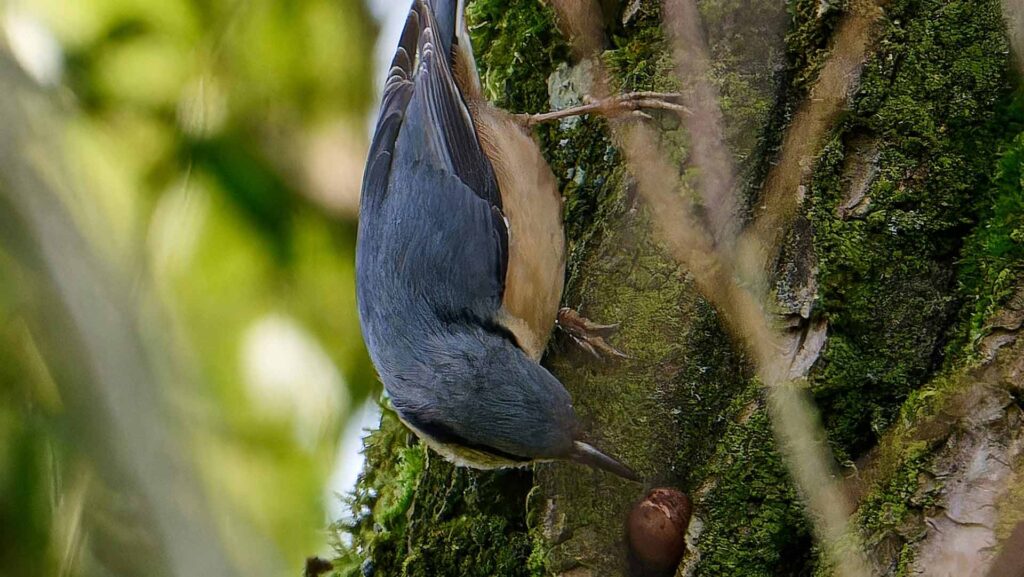
Nuthatches employ a diverse feeding strategy that spans both animal and plant food sources, displaying remarkable adaptability throughout the seasons. During warmer months, they primarily consume insects, spiders, and other arthropods they extract from bark crevices using their straight, pointed bills to probe and pry. In autumn and winter, when insects become scarce, they shift to seeds, nuts, and acorns—a dietary flexibility that allows them to remain in their territories year-round in many regions.
Their most distinctive feeding behavior involves wedging large food items like nuts into bark crevices to create a natural vise, then hammering them open with their strong bills—essentially using the tree as an anvil. This “hatching” behavior, rarely seen in other birds, gives them access to nutritional resources that would otherwise remain unavailable.
The White-breasted Nuthatch: North America’s Tree Climber
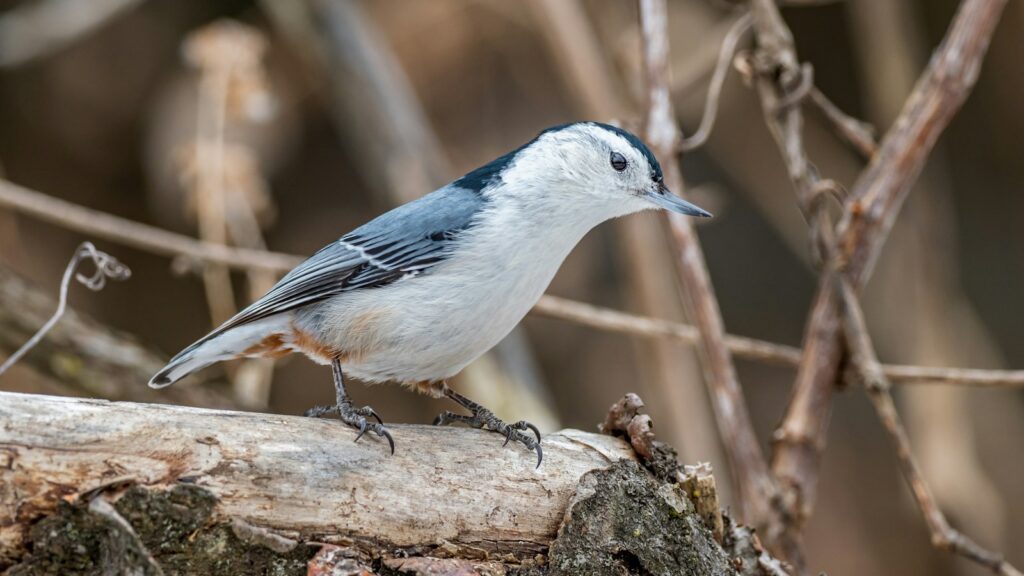
The White-breasted Nuthatch (Sitta carolinensis) stands as the most common and widely distributed nuthatch species across North America, instantly recognizable by its crisp black cap, bright white face and underparts, and bluish-gray back. These vocal birds announce their presence with a distinctive nasal “yank-yank” call that echoes through deciduous and mixed forests from southern Canada to Mexico.
Measuring about 5-6 inches long, White-breasted Nuthatches maintain strict territories and often form monogamous pairs that stay together year-round. They demonstrate remarkable longevity for small birds, with documented lifespans reaching 10 years in the wild—a testament to their highly specialized and successful ecological niche.
Red-breasted Nuthatch: The Conifer Specialist
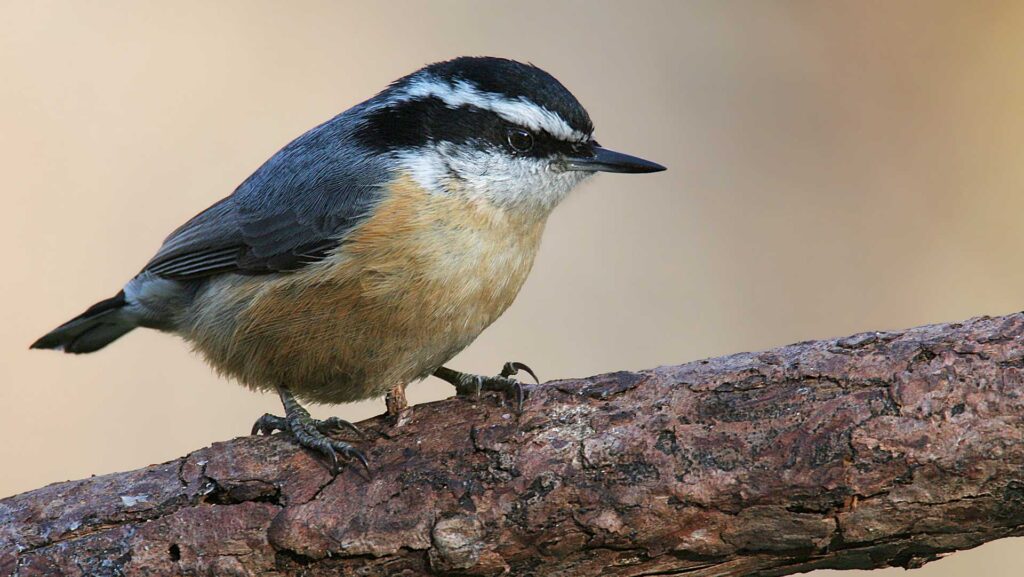
The Red-breasted Nuthatch (Sitta canadensis) brings its unique charm to North America’s coniferous forests with its distinctive rusty-orange underparts, black eye-line, and blue-gray upperparts creating an unmistakable identification pattern. Smaller than its white-breasted cousin, this species specializes in extracting seeds from conifer cones and exhibits fascinating irruptive migration behavior, moving southward in large numbers during years when conifer seed production is low in northern forests.
Their calls resemble tiny tin trumpets—a high, nasal “yank-yank” that often betrays their presence high in evergreen canopies. These enterprising birds frequently create nest holes in dead trees, then collect sticky pine resin to place around the entrance, creating a defensive barrier that may deter predators and competitors from accessing their nesting cavity.
Nesting Habits and Reproduction
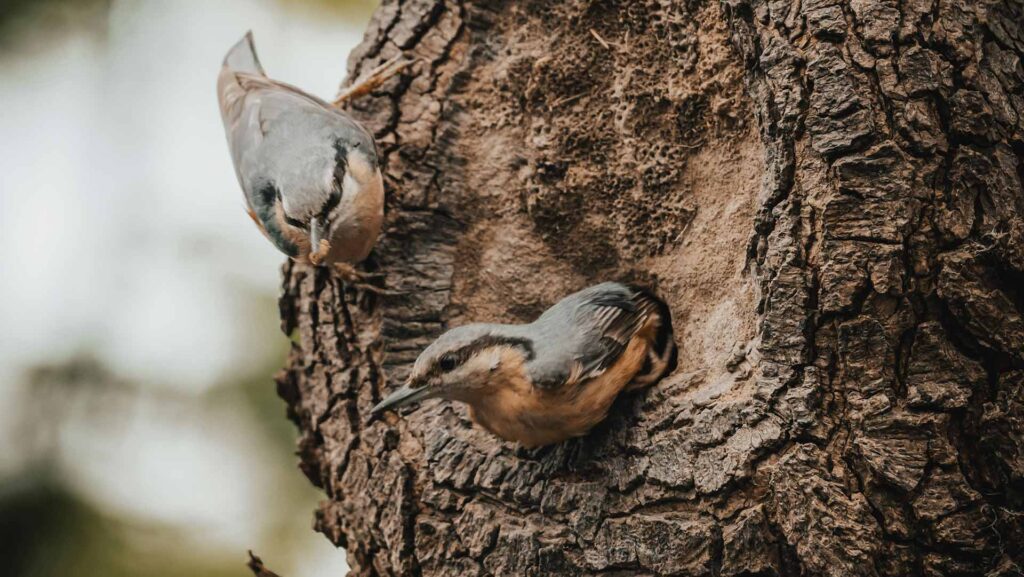
Nuthatches typically nest in natural tree cavities or abandoned woodpecker holes, though some species can excavate their own nest sites in soft, decaying wood. What makes their nesting behavior particularly fascinating is their use of mud or resin to modify the entrance hole to their precise specifications. Some species, like the Red-breasted Nuthatch, collect sticky pine resin on twigs and apply it around their nest entrance, possibly as a defense against predators or competing cavity-nesters.
Inside the cavity, females construct cup-shaped nests using bark strips, grasses, and animal hair where they typically lay 5-8 speckled eggs. Both parents participate in the approximately two-week incubation period and continue their partnership through the nestling phase, working tirelessly to feed their rapidly growing chicks until fledging occurs around 26 days after hatching.
Social Behavior and Winter Survival
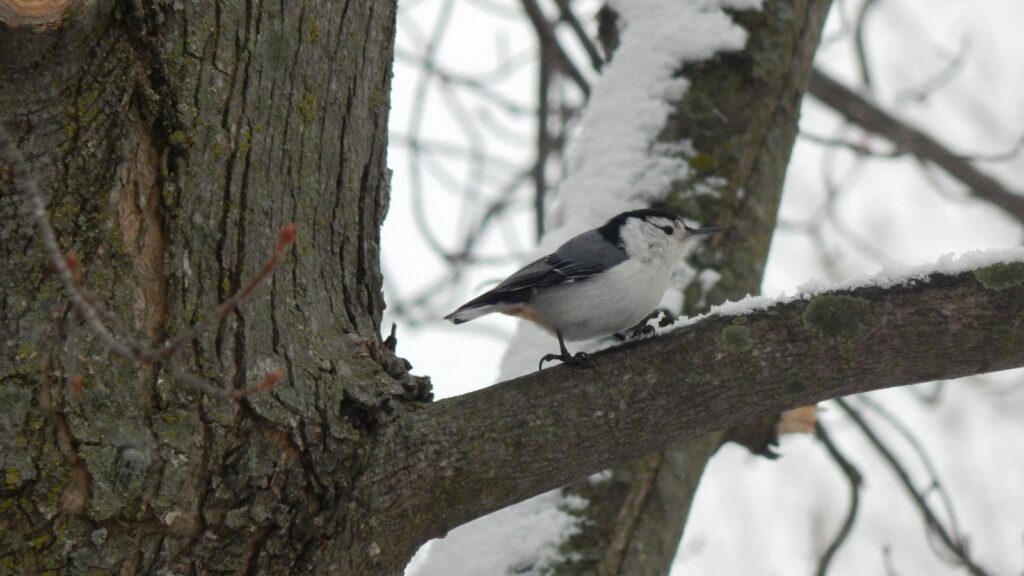
During the breeding season, nuthatches maintain strict territories with mated pairs aggressively defending their space against intruders. However, their social dynamics shift dramatically during winter months in many regions, when they become key members of mixed-species foraging flocks alongside chickadees, titmice, kinglets, and other woodland birds.
These winter associations provide multiple benefits, including enhanced predator detection, increased foraging efficiency, and social learning about food locations. Many nuthatch species practice food caching—storing seeds and nuts in bark crevices or ground hiding spots that they retrieve during food-scarce periods. Their exceptional spatial memory allows them to locate hundreds of these hidden food caches months later, a cognitive feat that contributes significantly to their winter survival strategy.
Eurasian Nuthatch: The Old World Counterpart
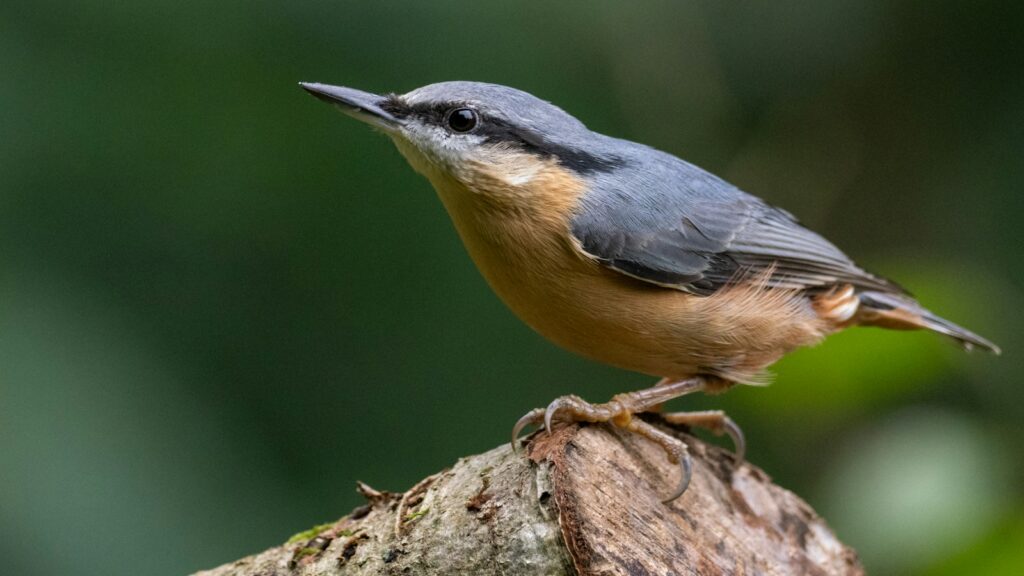
The Eurasian Nuthatch (Sitta europaea) represents the most widespread nuthatch species across Europe and temperate Asia, demonstrating remarkable adaptability across a range of forest habitats from deciduous woodlands to coniferous stands. Slightly larger than North American species, this bird features a striking blue-gray upper body, buff to rusty underparts (varying by region), and a bold black eye-stripe that creates its characteristic masked appearance.
Eurasian Nuthatches display fascinating behavioral adaptations, including their habit of plastering mud around nest entrance holes to precisely adjust the opening size—often making it just large enough for their bodies to pass through while excluding larger competitors. Their vocalizations include an impressive repertoire of calls and songs that vary significantly across their extensive geographic range, with distinct dialectal differences noted among regional populations.
Specialized Species Around the World
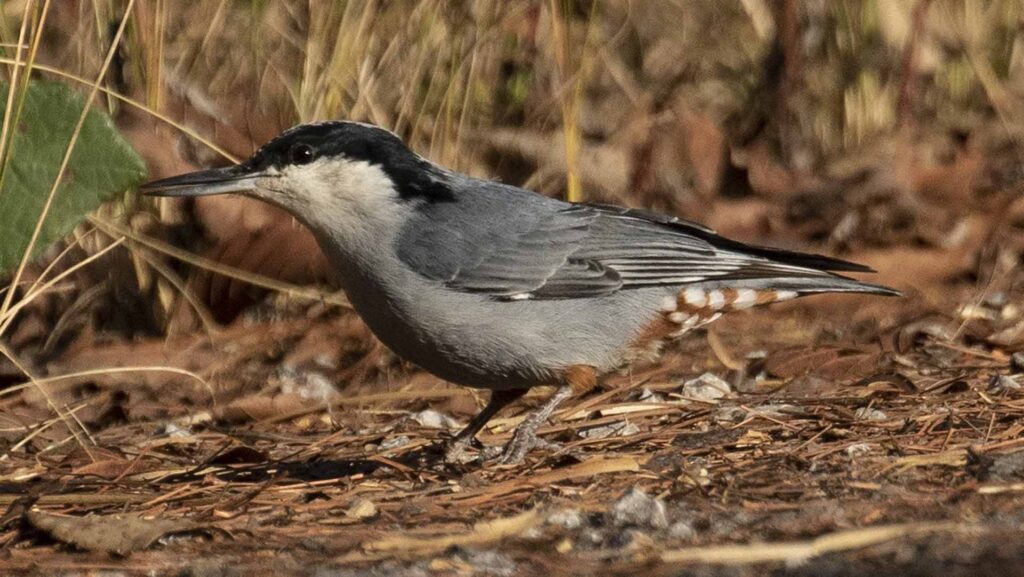
Beyond the familiar northern hemisphere nuthatches, the family includes several highly specialized species with remarkable adaptations and restricted ranges. The Giant Nuthatch (Sitta magna) of Southeast Asia lives up to its name as the largest nuthatch species, measuring nearly twice the size of common northern varieties. The Rock Nuthatch (Sitta neumayer) and Western Rock Nuthatch (Sitta tephronota) have abandoned trees entirely, adapting to climb vertical rock faces in arid Mediterranean and Middle Eastern landscapes.
Perhaps most specialized is the endangered Algerian Nuthatch (Sitta ledanti), discovered only in 1975 and confined to a tiny area of Atlas cedar forests in northeastern Algeria. Each of these species represents an evolutionary branch that has developed unique solutions to different environmental challenges while maintaining the core climbing abilities that define the nuthatch family.
Conservation Challenges and Status
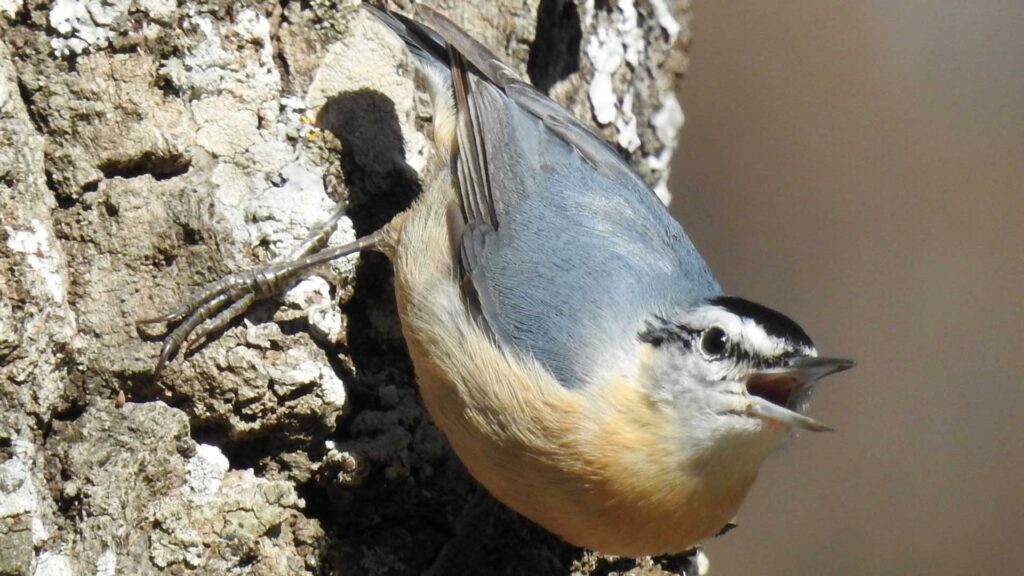
While many common nuthatch species maintain stable populations across broad ranges, several specialized types face significant conservation challenges. Habitat loss represents the most serious threat, particularly for forest specialists with limited ranges such as the Algerian Nuthatch and White-browed Nuthatch of Myanmar, both listed as threatened species. Climate change poses an emerging threat by altering forest composition and potentially disrupting the synchronization between nuthatch breeding cycles and peak food availability.
Conservation efforts focus on protecting mature forest habitats with abundant dead trees for nesting sites, as nuthatches require older growth forests with natural cavities or decaying wood suitable for nest excavation. In managed landscapes, the installation of specialized nest boxes with appropriately sized entrance holes has proven successful in supporting some nuthatch populations where natural nesting sites have become limited.
Observing Nuthatches in the Wild

Birdwatchers prize nuthatch sightings for their entertaining behaviors and acrobatic movements that add dynamic energy to any birding outing. The best way to locate these birds is by learning their distinctive calls—the nasal “yank-yank” or “beep-beep” vocalizations carry surprisingly well through forest environments and often reveal their presence before visual confirmation. Winter bird feeding stations with black oil sunflower seeds, peanuts, and suet offer excellent opportunities to observe nuthatches at close range, as many species readily visit feeders during colder months
Patient observers may witness their remarkable food-caching behavior as they retrieve single seeds, fly to nearby trees, and wedge them into bark crevices for future consumption. Their constant motion and distinctive headfirst descent down tree trunks makes them relatively easy to identify even for beginning birdwatchers once you know what behavioral patterns to watch for.
Distinguishing Nuthatches from Woodpeckers and Other Climbers
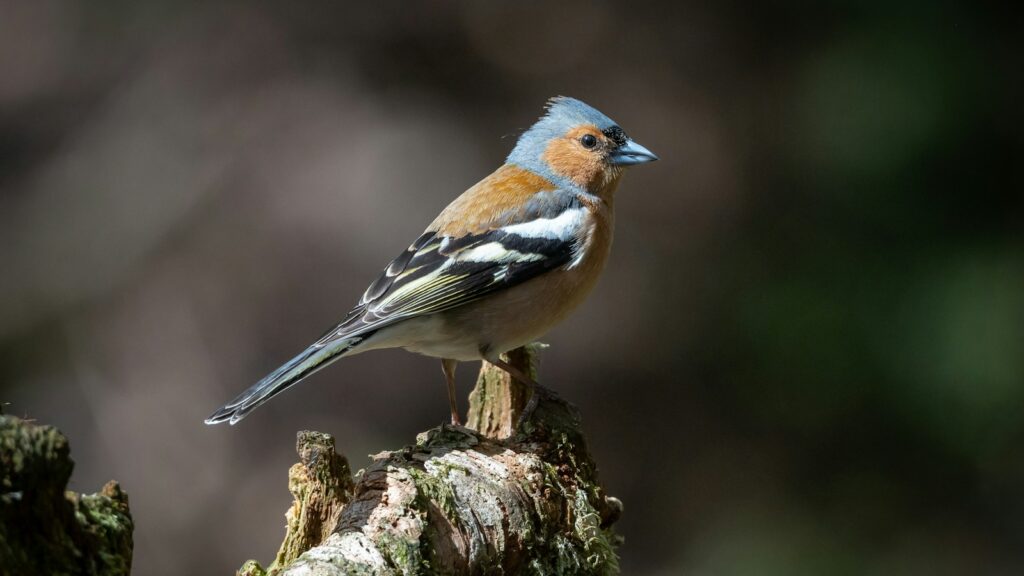
Despite their superficial similarities in feeding locations, nuthatches can be readily distinguished from woodpeckers through several key characteristics. While woodpeckers have stiff tail feathers they use as props when climbing and typically move only upward on trunks, nuthatches possess soft tails and move in all directions—most notably headfirst downward. Anatomically, woodpeckers feature chisel-like bills designed for drilling, while nuthatches have straight, pointed bills better suited for probing and prying.
Their vocalizations also differ significantly, with woodpeckers producing drumming sounds and varied calls versus the distinctive nasal notes of nuthatches. Another bark-climbing family, the treecreepers (Certhidae), might also be confused with nuthatches but are easily distinguished by their curved bills, cryptic brown coloration, and their habit of spiraling upward around trunks rather than descending headfirst.
Nature’s Alternative Approach to Tree-Climbing
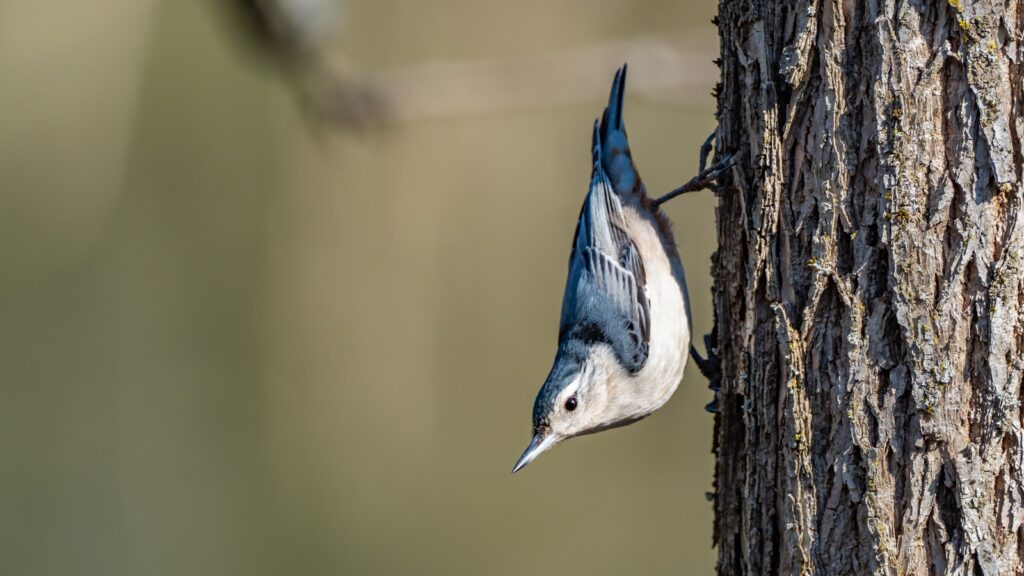
The nuthatch represents one of evolution’s most elegant examples of how different paths can lead to similar ecological niches. While woodpeckers evolved stiff tail supports and shock-absorbing skull structures for their percussion-based feeding strategy, nuthatches developed extraordinary feet and balance mechanisms that allow greater mobility and flexibility on vertical surfaces. This convergent yet distinct approach to exploiting tree bark resources demonstrates nature’s remarkable capacity for developing multiple solutions to the same environmental challenges.
The next time you witness a small bird defying gravity as it scampers headfirst down a tree trunk, take a moment to appreciate the evolutionary marvel that is the nuthatch—the bird that climbs like a woodpecker but took an entirely different evolutionary route to master life on vertical surfaces.
